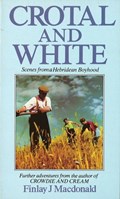Finlay J. Macdonald's impressions of a Hebridean childhood in Crowdie and Cream were hailed as 'the best portrayal of the Hebrides by an insider'. Now his journey continues into adolescence, and if his progress is sometimes hilariously inept, his commentary on his early village life, peopled as ever with larger-than-life characters involved in often break-neck escapades, is a valuable social document, which is none the less valid for being highly amusing. In the 1930s the people in the Western Islands of Scotland knew hardships against which the adversities of the 1980s pale into insignificance. The villagers' spirit, forged in the co-operative if independent times when cash was almost foreign to their economy, saw them through to the better days when tourism was beginning to bring its mixed blessings to the young Finlay's previously unspoilt home. Village life was getting easier and happier, and home life was being re-organised around the loom - paid for out of the gradually improving Macdonald family income - for the weaving of the wool that his mother spun and dyed in the traditional colours of Crotal and White. Economic sufficiency and the heightened social aspirations it brought with it served, paradoxically, only to increase the pressure on the 13 pupils of the village school in the Northlands - away from the village but still on Harris.
And so it was that Finlay J. Macdonald had to leave behind him a life that could never be replaced, evoked here in a subtle blend of hard fact, wry comment and uproarious story-telling.

